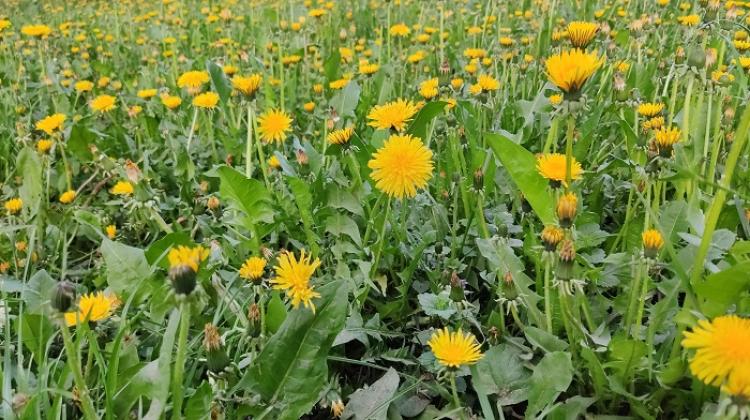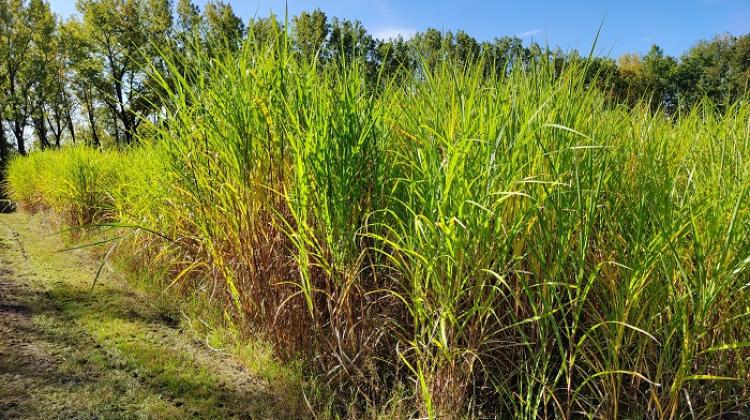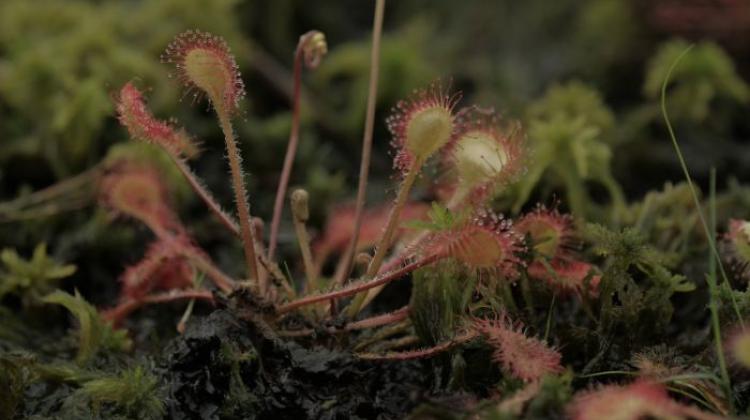Electrifying discovery of Polish scientists: Plants use leaves to communicate
 Credit: M. Szechyńska-Hebda
Credit: M. Szechyńska-Hebda
Plants warn each other with electrical signals transmitted on the surface of their leaves. The new plant communication mechanism has been described and explained by a team led by a Polish scientist.
A team of scientists led by Professor Stanisław Karpiński from the Warsaw University of Life Sciences, in collaboration with scientists from the University of Missouri (USA), was the first to describe the quantum-molecular and physiological foundations of a previously unknown form of communication between plants and the mechanism it triggers, called Network Acquired Acclimation (NAA). The results of their research are presented in The Plant Cell, the most prestigious journal publishing papers in the field of plant cell biology.
'Imagine a meadow of dandelions. It is not only a multitude of beautiful, yellow flowers, but also a thicket of leaves of various plant species that touch each other', describes the team leader, Professor Stanisław Karpiński from WULS-SGGW in Warsaw. 'When a single dandelion leaf is injured, the information quickly spreads in the form of an electrical signal throughout the plant and is passed on to the leaves of other plants. One dandelion +tells+ its neighbour with a coded electrical signal: +I've been hurt, watch out!+ The whole meadow is buzzing with information sent between plants.'
In one experiment, the leaves of two dandelions touched. One was electrically wired to the leaves of mimosa, which is known to fold its leaves abruptly in response to touch. The researchers' video recording shows that when the first dandelion is gently touched with a hot wire… the mimosa leaves fold after a few seconds. The electric signal was transferred from the touched dandelion leaf to the second leaf, which in turn touched a leaf of the second dandelion, and then - from the second dandelion - the signal was passed to the mimosa.
'This electrical signal is transferred quite quickly in the context of plant responses. It travels a few millimetres to several centimetres per second. The condition is a humid environment necessary to close the electric circuit', Karpiński says.
When people or animals experience danger, they can, for example, escape, reduce the risk or alert each other. A plant cannot escape, it has other defence strategies, but it also communicates information about the danger effectively. It was already known that plants could send chemical signals to each other, for example when leaves from African acacia trees are eaten by giraffes, they start to synthesize volatile chemical compounds (such as methylated jasmonates). This is a signal for neighbouring plants and leaves to produce bitter alkaloids, substances that alter the taste and thus make them less attractive as food. It was also known that the roots of neighbouring plants communicate the availability of water and minerals to their neighbours via the hyphae of soil fungi...
'Now the electrical signal transmitted on the leaf surface has been added to the list of communication mechanisms. The ability of early detection of danger undoubtedly allows individual plants to survive, and quick communication between plants can facilitate preparation of the entire plant population for the threat', emphasizes the first author of the paper, Dr. Magdalena Szechyńska-Hebda from the Plant Breeding and Acclimatization Institute - National Research Institute. She adds that this hitherto unknown mechanism of transmitting information in electrical signals on the leaf surface may be a priority when chemical or root signals are too slow, or when it is difficult for the plant to define a specific recipient of its signal, for example in a damp thicket of plants.
'Plants are not primitive organisms they appear to be. They can receive, process and physiologically remember a great variety of stimuli. The degree of communication between plant cells is as complicated as in the nervous tissue of animals', explains Professor Stanisław Karpiński.
'Our research confirms that surface electrical signals function as a communication link between plants, which are organized as a global network (community) of plants, just like James Cameron presented it in the movie Avatar. They work a bit like Facebook or Twitter', says the scientist from the Warsaw University of Life Sciences.
'In the near future, it is possible to imagine connecting plants tyo an electric signal amplifier and using the discovered mechanisms in an early warning system against plant infestation by necrotrophic pathogens, pests, or other plant damage in precision farming', the authors say.
For now, it is not known whether only binary information about the danger is transmitted between the leaves, or the communication is more advanced in terms of the intensity, frequency, and multiplicity of signals. It is also unclear whether plants only transmit an 'honest' signal to their neighbours, or perhaps they can transmit signals that mislead the competition. 'This is a whole new area of research. One discovery leads to a whole series of discoveries on which we are already working', Karpiński says.
The scientist explains that the NAA mechanism that allows plants to communicate must be evolutionarily very old - the electrical signal is generated by chloroplasts responsible for the photosynthetic process, which are the key cell organelles for plant life. It can be assumed that all green plant species including trees, perennials, ferns, mosses and seaweed can produce surface electrical signals.
'It is fascinating that plants can communicate information so precisely in the aboveground system, because it means that they can use the same system to +communicate+ with other organisms, such as pollinating insects', the authors add.
Professor Stanisław Karpiński points out that the discovery and description of the Network Acquired Acclimation (NAA) mechanism was facilitated by two previous important discoveries. One of them is Systemic Acquired Acclimatization (SAA, see Science, 1999), the other is Cellular Light Memory within a single plant (CLM, see The Plant Cell, 2010). Integrated electrical signals, the mechanism of non-photochemical quenching (NPQ), and reactive oxygen species (ROS) play a key role in both of these physiological processes.
'We have now found that electrical signals and reactive oxygen species can be directly transmitted between two different plants and can regulate NPQ changes in neighbouring plants, which was previously not known. We discovered a new type of direct aboveground communication between plants, including: electrical signalling on the leaf surface, reactive oxygen species and a network of photosystems. An electrical signal caused by an injury or a strong light stress of a single dandelion leaf can be transmitted through the SAA and CLM mechanisms described previously by our team to all the leaves of this dandelion and to the plant that is in direct contact with one of the leaves of the stimulated plant. And the newly described NAA mechanism causes changes in both plants. Moreover, similar changes can be induced in a network of plants connected with each other in series only by the contact of leaves', describes Professor Stanisław Karpiński. He adds that in a medium-sized tree with a thousand leaves, we have trillions of possible virtual communication connections between individual photosystems.
The research was funded by the Polish National Science Centre.
PAP - Science in Poland, Ludwika Tomala
lt/ zan/ kap/
tr. RL
Przed dodaniem komentarza prosimy o zapoznanie z Regulaminem forum serwisu Nauka w Polsce.



















